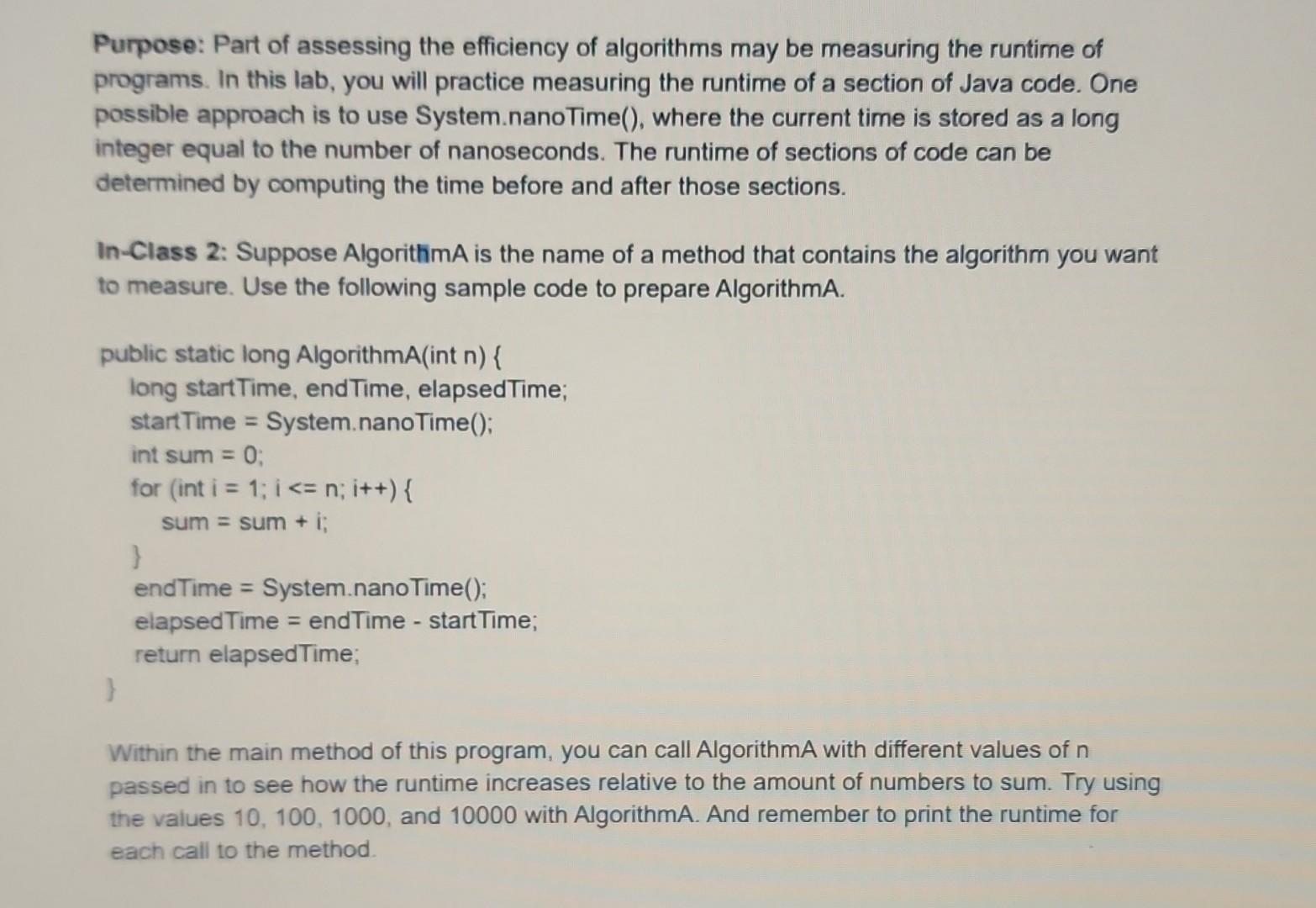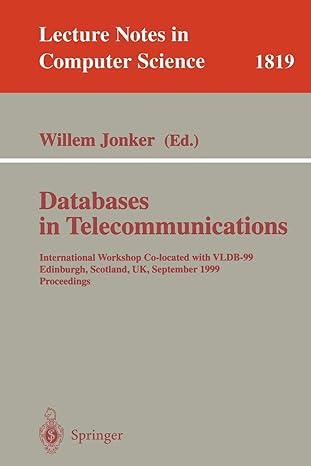Question
Lab 2: AlgorithmA is one approach to computing the sum of ( n ) consecutive integers. Prepare two more methods to handle the remaining two
Lab 2: AlgorithmA is one approach to computing the sum of \( n \) consecutive integers. Prepare two more methods to handle the remaining two algorithms outlined in the following table.
Figure 4-1
Three algorithms for computing the sum \( 1+2+\ldots+n \) for an integer \( n>0 \)
Remember to compute the runtime for each of the remaining two algorithms based on the implementation of AlgorithmA.
In the main method, call AlgorithmB and AlgorithmC using \( n \) values of \( 10,100,1000 \), and 10000. Display the runtimes of all three algorithms given the different \( n \) values in a table format. Refer to the following sample output for how this table can be designed.

Purpose: Part of assessing the efficiency of algorithms may be measuring the runtime of programs. In this lab, you will practice measuring the runtime of a section of Java code. One possible approach is to use System.nanoTime(), where the current time is stored as a long integer equal to the number of nanoseconds. The runtime of sections of code can be determined by computing the time before and after those sections. In-Class 2: Suppose AlgorithmA is the name of a method that contains the algorithm you want to measure. Use the following sample code to prepare AlgorithmA. public static long AlgorithmA(int n){ long start Time, endTime, elapsedTime; start Time = System . nanoTime () ; int sum =0; for (int i=1;i
Step by Step Solution
There are 3 Steps involved in it
Step: 1

Get Instant Access to Expert-Tailored Solutions
See step-by-step solutions with expert insights and AI powered tools for academic success
Step: 2

Step: 3

Ace Your Homework with AI
Get the answers you need in no time with our AI-driven, step-by-step assistance
Get Started


